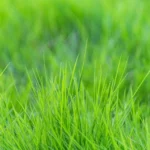
Malabar spinach, also known as Vine spinach, is a tropical vine and leafy vegetable from the Madeira-vine family. It is native to South Asia, Sri Lanka, and New Guinea, but it can now be found in temperate and tropical regions of Europe, Africa, America, and Australia. Malabar spinach prefers hot, humid climates and thrives best in moist, fertile, sandy-loamy soil that is exposed to full sun. Malabar spinach is mostly consumed in Asia, despite the fact that it is available in grocery stores all over the world.
Malabar spinach is a creeping vine that can grow to be up to 33 feet long.
The leaves of Malabar spinach are thick, broad, oval, or heart-shaped. They may be entirely green or dark green with pink veins and purple stalks.
Malabar spinach has small, white or pinkish-white flowers that grow in elongated, upright clusters.
Both types of reproductive organs can be found in flowers (perfect flowers).
From May to September, Malabar spinach blooms. Flowers attract bees and flies, which aid in pollination of this plant.
Malabar spinach fruit is a dark purple or black berry. From July to October, ripe fruit can be seen on the plant.
Malabar spinach grows from seed and cuttings.
Malabar spinach leaves are ready to harvest 50 to 70 days after sowing.
Malabar spinach is high in fiber, vitamins A, C, B2, B6, and B9, as well as minerals like iron, calcium, potassium, and manganese.
Malabar spinach’s succulent leaves and tender stems are consumed by humans. Because the leaves have a mild flavor and a high mucilaginous content, every dish made with Malabar spinach has a gel-like texture (Malabar spinach is often used as thickening agent). Malabar spinach leaves are used to make soups, stews, and curries, and they are frequently eaten with lentils, meat, rice, and seafood.
Malabar spinach flowers and seed heads are also edible.
The purple-red liquid extracted from the fruit of Malabar spinach is used as a food dye. It is primarily used in the baking industry (for pastries).
Malabar spinach aids digestion, improves eye function, and protects cells from free radical damage, iron deficiency anemia, osteoporosis, and the development of certain types of cancer. It can also lower blood pressure and slow the aging process. Malabar spinach leaves are used to soothe skin after insect bites, and the cooked root is used to treat diarrhea.
Malabar spinach is frequently used in conjunction with Hibiscus macranthus to boost fertility (these two plants increase testosterone level in male rats).
Because of the high oxalic acid content in the leaves, people with kidney stones should avoid eating Malabar spinach (it accumulates in the urinary tract in the form of oxalic crystals).
Malabar spinach is a plant that grows year after year (life span: more than 2 years).










As a student of history, I appreciate the power of facts in shaping our understanding of the past. When we rely on factual evidence, we’re able to piece together a more accurate picture of what happened and why. This in turn helps us to learn from the past and avoid making the same mistakes in the future.